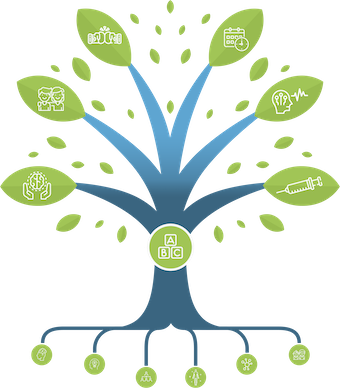What is the best way to stop an attack?
You have to stop the attack at its onset. Treating an attack that is already well established is harder. Identifying the onset of an attack is a primordial step.
To successfully control your migraines, you have to: know your attacks and be able to identify their onset. Look out for these warning signs:
- Pain is throbbing (rhythmic, like a heartbeat in the head or hammer blows);
- Light becomes irritating;
- Pain becomes more intense;
- Pain is located on one side of the head;
- Nausea appears (it is probably too late).
Rule #1:
“It is going to go away, I’m not going to have an attack, I’ll just take some Tylenol.” This is nothing but wishful thinking, typical of migraine sufferers. How often has this strategy worked??? Most of the time, you end up incapacitated after waiting too long to try to treat your attack. ACT at the attack’s onset; studies have shown that treating the attack early (during its onset) not only is more effective to stop the current attack, it also reduces the frequency of subsequent attacks!
Rule #2:
With the help of your doctor, find an effective acute treatment. Everybody is different and each medicine has features that can suit you. Throughout your life, you may use several different acute treatments. Rule #3: Always have your medication with you. A pill left at home will not help you treat an attack at work.
What is the right medication for me?
Every migraine sufferer is different and requires a treatment tailored to his specific needs. The best way to find out the right medication is through trial and error. It is generally necessary to try a treatment for a few attacks (3 to 4) to know if it’s right for you. Note the results in your migraine diary. When you evaluate the treatment, ask yourself the following questions:
- Did I take my treatment at the right moment (before the pain is intense)?
- How long did it take to feel relief?
- Did I get side effects?
- Did the headache come back after the initial relief (this is called recurrence)?
A good treatment:
- works in less than 2 hours;
- allows you to resume your activities;
- does not have incapacitating side effects;
- stops the attack without recurrence.
Categories
THE MIGRAINE TREE
- BRANCHES
- ACUTE TREATMENTS
- DEVICES AND NEUROMULATIOIN
- PREVENTIVE TREATMENTS
- PROCEDURES AND INJECTIONS
- SELF-CARE AND LIFESTYLE
- SOCIAL LIFE
- TRUNK
- ROOTS
OTHER CATEGORIES




